D
Deleted member 1381
Guest

Mikäs tämä on?
Eikö tuo ole CV90:nen, onnistuttu kuvaamaan vain niin, että tykki näyttää sangen järeältä.
Follow along with the video below to see how to install our site as a web app on your home screen.
Note: This feature may not be available in some browsers.

Mikäs tämä on?
Eikö tuo ole CV90:nen, onnistuttu kuvaamaan vain niin, että tykki näyttää sangen järeältä.
No juu, kohteliaita ovat. Tarkoitin josko on löytynyt kuvausta itse toiminnasta. Esimerkiksi Norjassa olivat kovillä suomalaisten jääkärien kanssa silloisessa harjoituksessa. En itse ole löytänyt, että toimintaa olisi luonnehdittu paitsi tuo yksi haavoittuneiden evakuointi jossa suomalaisryhmän taistelijapelastajat saivat koulutukseensa nähden hieman liian vakavasti haavoittuneet hoidettavakseen.Ainakin tuossa...
Noh, CV9040:n tykkihän on isompi kuin CV9030FIN:n.
https://www.osw.waw.pl/en/publikacje/analyses/2017-09-20/aurora-swedens-response-to-zapad
Aurora: Sweden’s response to Zapad?
ANALYSES
2017-09-20
Justyna Gotkowska
The Aurora 17 national military exercise is taking place in Sweden on 11-29 September, in parallel to the Russian-Belarusian Zapad-2017 manoeuvres. Approximately 19,000 soldiers are participating, making Aurora 17 the largest Swedish military exercise in recent years. The Swedish Armed Forces are conducting national defence exercise for the first time since the late 1990s, thus sending a clear message to Russia that they are ready to defend their country. The Aurora 17 exercise is also an element of the implementation of Sweden’s Defence Strategy for 2016–2020 which was issued in 2015 and which radically changed the direction of development of the Swedish Armed Forces by setting new national defence priorities. Aurora 17 is also a manifestation of Sweden’s military co-operation with NATO member states and its partners which Stockholm has been developing intensively since the annexation of Crimea. Aurora 2017 is the first occasion when Sweden is training how to receive NATO troops and how to collaborate with them in an exercise on such a scale. Aurora 17 is supported by a majority of the Swedish public and political elites. However, the exercise itself as well as cooperation with NATO have also met with resistance, in particular from pacifist organisations and radical left groupings which have adopted the Russian narrative critical of Swedish defence policy. Furthermore, within Sweden’s red-green coalition and even within the Social Democratic Party there is also some disagreements over the scope of co-operation with NATO and the USA.
What and why are the Swedes exercising?
The Aurora 17 exercise is not only the largest training event of the Swedish Armed Forces since 1993, it is also the first Swedish military exercise since the 1990s based on a national defence scenario (until recently, the Swedish Armed Forces were engaged in training for crisis management operations only). In political terms, Aurora 17 is expected to send a message to both the Swedish public and a potential aggressor (de facto Russia) that Sweden is ready to defend its sovereignty and territory. In military terms, Aurora 17 is intended at training collaboration between the separate branches of the armed forces, at receiving military assistance from third-party countries and at exercising defence of Swedish territory (the Stockholm area and Gotland island). It is not a coincidence that Aurora 17 was planned to take place at the same time as the Russian-Belarusian Zapad-2017 military exercise. Most likely the intention was to maintain increased combat readiness of the Swedish Armed Forces at that time. The Aurora 17 exercise is an important step in implementation of the Defence Strategy for 2016–2020 adopted by the Swedish government and parliament in 2015. The strategy radically changed the direction of development of the armed forces – from an expeditionary army to a military concentrated on national defence and planning for wartime scenarios (the Swedish Armed Forces numbers ca. 15,000 soldiers at peacetime, 25,000 at wartime, with an additional 21,700 of home guard forces) and set new priorities.
Firstly, the strategy recognised that improving the operational warfighting capability of all mobilised military units and overall operational capability are top priority issues. Mobilisation exercises and combat readiness drills have been recognised as the best instrument for a quick reinforcement of the Swedish military. Aurora 17 is the first exercise since the 1990s in which most of the units to be deployed at wartime are participating, i.e. around 19,000 full-time, reserve and home guard soldiers (see Appendix).
Secondly, the strategy emphasises the need to reinforce the defence of Gotland. The measures to be taken include establishing a combat group on the island (with a mechanised infantry company and a reserve armoured company together with a light infantry battalion capable of being rapidly deployed from mainland Sweden) and increasing the number of military exercises in this area. The Swedish Armed Forces strengthened their presence in Gotland already in 2016, and are training the joint and combined defence of the island together with partner forces during Aurora 17.
Thirdly, the strategy treats improving total defence capabilities, i.e. the engagement of civilian institutions in national defence in co-operation with the military, as a priority issue. Therefore, around 40 civilian institutions are taking part in Aurora 17, and the exercise scenario envisages, for example, civil-military co-operation as regards supplying the armed forces in the case of the failure of the payment system.
Fourthly, at the time of Aurora 17, the branches of the Swedish Armed Forces train the capabilities which have been given high priority in the Defence Strategy for 2016–2020. In the case of the Army this includes command and control at the brigade level and operations with two brigades simultaneously against enemy forces in the case of a conventional conflict (before 2016, the land forces were organised in battlegroups for foreign crisis management operations in asymmetrical conflicts). Half of Sweden’s wartime land forces consist of reserve units, therefore emphasis is currently placed on training the rapid mobilisation of the reserve soldiers. The Air Force has also been reorganised since 2016 so as to improve operational capabilities at wartime (the peacetime fighter training establishment should be able to serve alongside the other fighter squadrons in case of war). During Aurora 17 the JAS 39 Gripen fighters also train taking off and landing on public roads and the capability to disperse the fighter squadrons within their regular bases and between alternate bases. The Navy was the least engaged in Aurora 17. At the same time, it took part in the large international Northern Coast 2017 exercise in the south-central part of the Baltic Sea hosted by Sweden this year. This exercise included maritime surveillance, mine counter-measures, anti-surface, anti-air and anti-submarine warfare. Improving capabilities in the latter area is currently a priority of the Navy.
Aurora 17 has demonstrated the fundamental change in the direction of the development of the Swedish Armed Forces and the concentration of the military potential on national defence. However, it is worth noting that this change has not translated into increasing spending on the Swedish military which had been underfunded for years and has serious staff and materiel shortages. According to SIPRI data, the defence budget in 2016 was 45.5 billion Swedish krona (US$5.3 billion), i.e. 1% of GDP (the defence budget has been at a level of around 1% of GDP for almost ten years). It was agreed in 2015 that military spending in 2016–2020 would increase by an additional 10.2 billion Swedish krona (US$1.3 billion). Furthermore, the government allocated an additional 0.5 billion krona (US$63 million) on military expenses this year. However, these funds will not be sufficient to make the necessary investments, considering the costs of labour, maintenance of military equipment and infrastructure, intensifying training activity and supplementation of the basic personal communication equipment, ammunition and military equipment for the wartime organisation of the armed forces.
NATO (and Finland) rush to Sweden's help
The Swedish exercise is aimed not only at improving the warfighting capabilities of all branches of the armed forces but also their co-operation with partner forces in defending Sweden (which is not a member of NATO). Around 2,000 foreign soldiers take part in the Aurora 17 exercise, predominantly from NATO member states: around 1,300 soldiers from the USA, around 300 from Finland, around 120 from France and subunits of 40–60 soldiers from Norway, Denmark, Lithuania, Latvia and Estonia. Stockholm fears that, given its strategic location in the Baltic Sea region, Sweden might become involved in a conflict between Russia and NATO, and must be prepared for Russian aggression aimed at ‘excluding’ Sweden’s military infrastructure and armed forces from a conflict in the region. For example, if Russia seized the Swedish island Gotland and deployed air and coastal defence systems there, it would gain an advantage in air and maritime space in the Baltic region over NATO. To prevent such scenario, Sweden is ready to co-operate with NATO forces and has been enhancing co-operation with NATO over the past few years. In 2014, Stockholm signed a Host Nation Support agreement (ratified in 2016) creating the opportunity to use Sweden’s land territory, air and maritime space by NATO forces, each time upon the Swedish government’s consent. Aurora 17 is the first occasion for the Swedish Armed Forces to train receiving NATO troops using Gothenburg’s port and airport, securing the movement of allied forces from the west of Sweden to the east and south of the country (towards Stockholm and Gotland) and cooperating with them, e.g. in the air defence of the capital and the Swedish islands in the Baltic Sea).
What attracts special attention in Aurora 17 is above all the large share of U.S. forces participating (around 1,300 soldiers, including a battery of the Patriot air defence system, Apache AH64 helicopters, US Army and Minnesota National Guard mechanised units, and the USS Oscar Austin destroyer). US participation is a continuation of the enhancement of the Swedish-US military co-operation formalised in a bilateral statement of intent in June 2016. The agreement envisages enhancing interoperability, training and exercises, deepening armament cooperation, advancing joint research and development, and cooperating in multinational operations. On the one hand, the participation of the USA in Aurora 17 proves that the Pentagon is aware of Sweden’s significance in regional operational theatre. At the same time it sends a clear message to Moscow that the USA will reinforce the defence of Sweden in case of a conflict in the region (even though it is formally not its ally). On the other hand, the participation of the US Patriot air defence system battery in this exercise (deployment on Öland island close to Gotland) needs also to be viewed in the context of the Swedish procurement for a medium-range air defence system. The Swedish program is worth around 10 billion krona (around US$1.2 billion) and is to be settled already this year. This is most likely the reason why the French armed forces are participating in the Swedish exercise as well, with a battery of the SAMP/T air defence system (deployment on Utö island in the Stockholm archipelago). According to media leaks, the Swedish defence ministry is more inclined to buy the US system partly for political reasons (the desire to enhance co-operation with the USA). Sweden is planning to receive the first supplies around 2020; for the time being, there is no information regarding the number of fire units, their configuration, or industrial co-operation.
Finland’s participation in Aurora 17 is also worth noting (around 300 soldiers, including an infantry company, two transport helicopters and six-eight F/A-18 Hornet aircraft). Finnish involvement in Swedish exercise is highlighted since it implements the provisions of the Defence Strategy for 2016–2020 and the bilateral Action Plan for Deepened Defence Cooperation. In 2014, Helsinki and Stockholm agreed to develop a Swedish Finnish Naval Task Group for combined action during crisis or war, intensifying exercises of land forces, developing a Finnish-Swedish Brigade Framework and increasing the level of interoperability between both air forces. Since the signing of the Action Plan, Sweden and Finland have been developing the most advanced military cooperation among the Nordic states. They have also been engaged most intensely in cooperation regarding the mutual use of naval and air bases and regarding mutual access to their land territories. Agreements to this effect (Alternate Landing Base Concept and Easy Access Declaration) were concluded within NORDEFCO in 2016. Sweden and Finland share a similar geographical location, lack of NATO membership and the growing concern about the Russian military activity and the Kremlin’s aggressive policy. Even though the Swedish-Finnish co-operation does not formally provide for any mutual obligations at wartime, it may be expected that the two countries will co-operate in the case of crisis or conflict in the region.
The controversies at home
The Aurora 17 exercise and co-operation with NATO and the USA have provoked controversies in Sweden. A small section of the Swedish political elite and public still cherish the myth of a ‘neutral’ Sweden and are convinced that the country is capable of remaining outside any crises and conflicts in the region, and that its pacifist approach may even contribute to de-escalating tensions with Russia. This approach is partly a legacy of the strong Swedish pacifist movement during the Cold War and partly an effect of Russian propaganda and taking the Kremlin’s narrative on board. De facto, Sweden was not neutral even at the time of the Cold War (considering its secret co-operation with the USA and the UK) and de iure it ceased to be neutral upon its accession to the European Union in 1995 and acceptance of the Treaty of Lisbon including the mutual assistance clause (Article 42(7) TEU). Furthermore, all Swedish governments since 2009 have upheld the ‘declaration of solidarity’ which provides that Sweden will not be passive in the case of a “catastrophe or military attack on any EU member state or Nordic country and expects the same from them.” At present, there is no political or social consensus in Sweden as regards NATO membership.
Strengthening Sweden’s defence capabilities, including holding the Aurora 17 exercise, and Sweden’s co-operation with NATO and the USA has been actively opposed by Swedish pacifist organisations which have launched a nationwide campaign, ‘Stop Aurora’. Demonstrations, lectures, seminars and concerts have been held as part of the campaign. It has been backed by representatives of left-wing parties, including the parliamentary Left Party (21 seats, 5.7% of the vote in the election in 2014) and the Feminist Initiative party which remains outside parliament (3.1% of the vote in the 2014 election) and marginal radical left groupings. The organisers of the campaign believe that the exercise is contributing to the deterioration of security in the Baltic Sea region and enhances Sweden’s co-operation with a nuclear alliance (i.e. NATO). They are also of the opinion that peace should be promoted through diplomacy, co-operation and dialogue and not through armament. The largest demonstration so far took place on 18 September in Gothenburg (ca. 3,000 people). The protests are not large but they do have media publicity. False information has often been used during the campaign (partly also broadcast in the public radio and TV): that Sweden is neutral and that Aurora 17 is a NATO military exercise which escalates tension with Russia and that the USA will deploy nuclear weapons on Swedish soil during the exercise and the US Patriot systems are able to conduct a missile attack on Russia from the territory of Gotland. However, Swedish activists have not expressed their opinion or protested against the (unofficially much larger) Russian Zapad-2017 exercise and invited Russian analysts promoting the Kremlin’s narrative to seminars and meetings. Thus, the Swedish pacifist organisations, which promote the demilitarisation of Sweden and are very critical of NATO and the USA, are an attractive channel for the Kremlin’s propaganda. Whether the they have contacts with the Russian secret services or not, they are becoming a convenient instrument and part of the Russian campaign aimed at influencing Sweden, albeit with limited reach.
Regardless of the fact that a majority of the political elite supports the present line in Sweden’s defence policy, there are still disagreements over the scope of co-operation with NATO and the USA inside the minority government coalition formed by Sweden’s Social Democrats and the Green Party and even within the Social Democrats itself. On the one hand, the Green Party which partly originates from the pacifist movement (25 seats and 6.9% of the vote in the 2014 election) does not fully support the official line adopted by the government and Defence Ministry led by a Social Democrat. In 2016, four members of this party voted against the ratification of the Host Nation Support agreement with NATO. In September this year, some MPs representing the Green Party participated in ‘Stop Aurora’ demonstrations, and local structures of the party co-organised a demonstration in Gotland against holding the exercises and developing co-operation with the USA and NATO. On the other hand, there are disagreements inside the Social Democratic Party between the realistic and the ideological wings over the way security policy is shaped (the Defence Ministry led by Peter Hultqvist versusthe Ministry of Foreign Affairs led by Margot Wallström). The Swedish Defence Ministry has embarked on the development of pragmatic co-operation with the USA and NATO, while the Ministry of Foreign Affairs has been engaged in initiatives which are problematic from the point of view of enhancing this co-operation. The best example is the fact that the Ministry of Foreign Affairs has insisted – contrary to the Defence Ministry’s stance – that Sweden should adopt the Treaty Banning Nuclear Weapons. Sweden, a non-permanent member of the UN Security Council in 2017–2018, in July this year supported the adoption of the treaty by the UN General Assembly while NATO member states (and other nuclear powers) and non-allied Finland did not. If Sweden ratifies the treaty, it may close its way to future NATO membership and may adversely affect its relations with the USA. Washington believes that the treaty undermines the existing international legal framework concerning the non-proliferation of nuclear weapons and views it as harmful to international security architecture and the process of nuclear disarmament. According to information from the Swedish media, the US Department of Defense in a letter addressed to the Swedish Defence Ministry in August this year announced that if Sweden ratified the treaty, this would have negative consequences for Swedish-American political, military and industrial co-operation. After this information was leaked, the Swedish government decided to appoint a special commission to check the consequences of ratifying the treaty before the final decision is made.
Appendix: the Swedish Armed Forces in 2016
Strength of the Swedish Armed Forces
Full-time personnel
14,800 soldiers
9,100 full-time officers
5,200 full-time squad leaders, soldiers and sailors (GSS/K)
200 active reserve officers
100 active reserve squad leaders, soldiers and sailors (GSS/T)
additionally 4,000 conscripts annually since 2018
5,300 civilian workers
Reserve personnel
3,900 reserve squad leaders, soldiers and sailors (GSS/T)
6,400 reserve officers
Army*
6,850
Navy*
2,100
Air force*
2,700
Home Guard
21,700
Source: Swedish Armed Forces
* Data quoted from The Military Balance 2016. The Swedish Armed Forces do not specify the number of soldiers who serve in each branch of the armed forces. Furthermore, the soldiers who serve, for example, in national and international command structures, logistics, education and military intelligence need to be added to the total strength of the branches of the armed forces.
[quote author=Flak link=topic=7352.msg91010#msg91010 date=1506124997]
4 IKV-91 har rustat på och fått kriga mot Abrams på Gotland.
BT-systemen fick simulera att IKV:erna var bl a: T-72 och T-80.
Ruotsalaisfoorumilla eräs sanoo että 4 kpl IKV-91 on otettu museosta, laitettu toimintakuntoon ja toimivat Gotlannilla amerikkalaisia vastaan simuloiden olevansa T-72 ja T-80
Sukellusveneen epäillään loukanneen Ruotsin aluevesiä
Maanantai 25.9.2017 klo 14.56
Epäilty sukellusvene havaittiin 29. kesäkuuta kello 11 aikoihin, kun Gävlen satamassa tehtiin ruoppaustöitä. Kuvituskuva. (MOSTPHOTOS)
- Tapaus pitää luokitella vakavaksi, tarkoitukselliseksi loukkaukseksi, todetaan ruotsalaisen Dagens Nyheter -lehden lukemassa raportissa.
Raportti on tehty kahden asiantuntijan aloitteesta, ja se lähetettiin muutama päivä sitten puolustusvoimille ja Gävlen satamaan.
Epäilty sukellusvene havaittiin 29. kesäkuuta kello 11 aikoihin, kun Gävlen satamassa tehtiin ruoppaustöitä. Merenmittaushenkilökunnan kerrotaan havainneen kaikuluotaimen avulla sisällä satamassa 13 metriä pitkän ja kolme metriä leveän, venettä muistuttavan esineen.
Toisessa mittauksessa esinettä ei kuitenkaan enää havaittu. Paikalle hälytetyt sukeltajat löysivät merenpohjasta kuitenkin useita senttimetrejä syviä jälkiä.
Gävlen satama otti yhteyttä rannikkovartiostoon ja poliisiin, joka puolestaan otti yhteyttä puolustusvoimiin. Koska puolustusvoimat ei palannut enää asiaan Gävlen sataman kanssa, kaksi asiantuntijaa päätti itse selvittää tapahtumat.
Asiantuntijoiden raportin mukaan kyseessä saattoi olla vieraan sukellusveneen tahallinen Ruotsin aluevesien loukkaus.
Puolustusvoimat ei ole halunnut kommentoida analyysia.
Lähteet: Dagens Nyheter ja Aftonbladet
Epäily tapahtui Gävlen satamassa. (KUVAKAAPPAUS GOOGLE MAPSISTA)
@ http://www.iltalehti.fi/ulkomaat/201709252200416499_ul.shtml?ref=juurinyt_desktop
Tämä on uutisoitu aikaisemminkin, muistan nuo sonar-kuvat. Joten on siellä viranomaisillakin tieto ollut jo aikaisemmin. Nyt on varmaan joku koosteloppuraporttipumaska saatu valmiiksi ja luovutettu jollekin silmäätekevämmälle henkilölle. Mutta repivät otsikot siitä taas sai...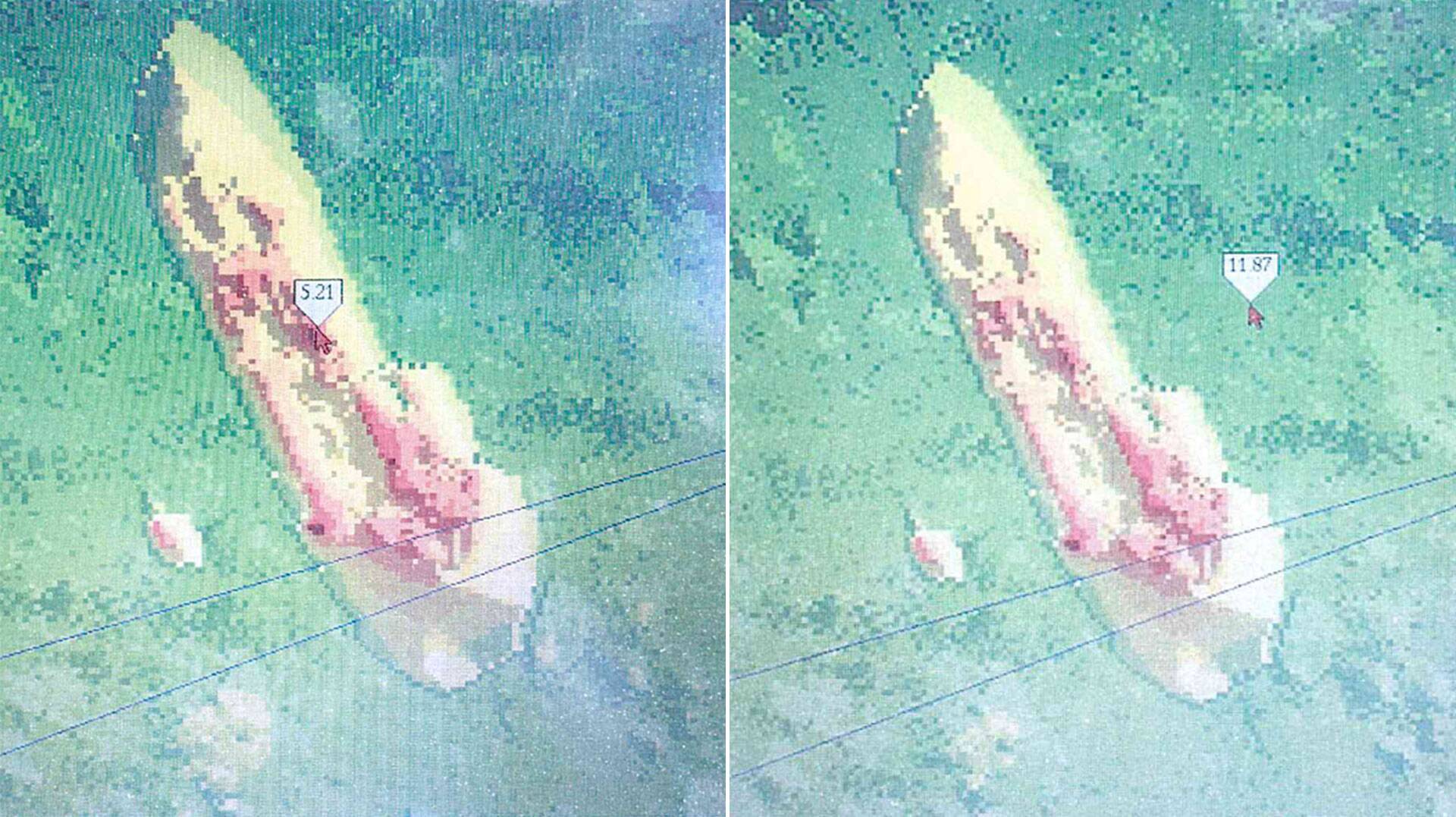
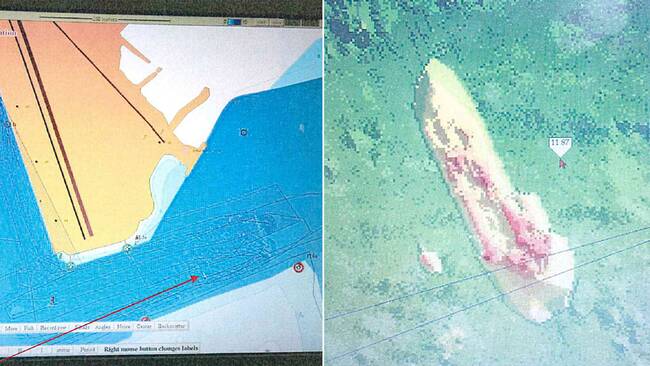
Ei taida olla kalaparvi.
Ei taida olla kalaparvi.




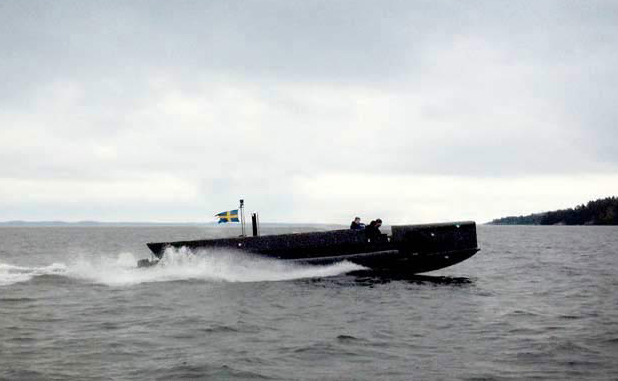
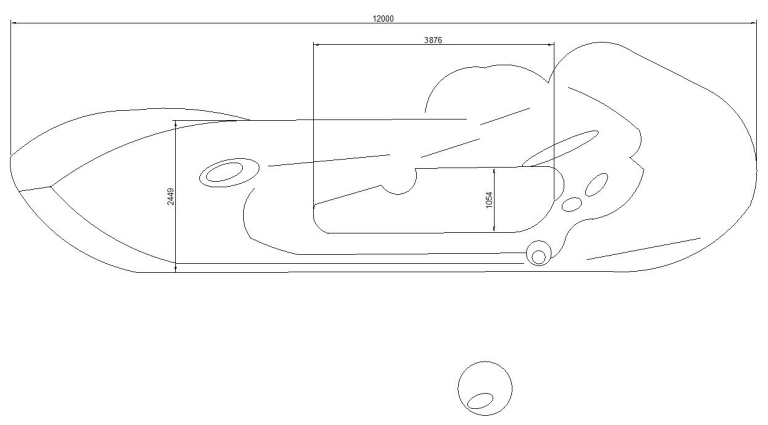
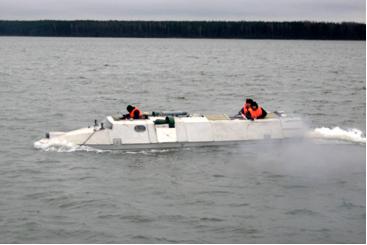
http://www.ess.fi/uutiset/ulkomaat/art2402908Tulipalo tuhonnut osan moskeijasta Ruotsin Örebrossa
Ruotsin Örebrossa tulipalo on tuhonnut osan moskeijasta tänä aamuna. Aamukolmelta Suomen aikaa syttynyttä paloa epäillään tuhopoltoksi.
Tulipalo ei tiettävästi ole aiheuttanut loukkaantumisia.
Vivallan kaupunginosassa sijaitseva moskeija oli jo ilmiliekeissä palokunnan saapuessa paikalle.
Pelastuslaitoksen päällystöön kuuluva Ulf Jacobsen arvioi ennen aamukahdeksaa, että osa moskeijasta saatetaan pystyä pelastamaan. Paloa ei ollut saatu tuohon mennessä sammumaan.
Viranomaisilla ei ollut aamulla käsitystä tulen tarkemmasta syttymissyystä tai -paikasta.
STT
https://yle.fi/uutiset/3-9851058?origin=rssRuotsin Örebrossa moskeijan suurpalo tuhopoltto – epäillään tuhopoltoksi
Kukaan ei ole tiettävästi loukkaantunut tulipalossa.
Ulkomaat
26.9.2017 klo 08:54päivitetty 26.9.2017 klo 08:55
Ruotsin Örebrossa tulipalo on tuhonnut osan moskeijasta tänä aamuna. Paloa epäillään tuhopoltoksi.
Kukaan ei ole tiettävästi loukkaantunut tulipalossa.
Palo syttyi aamukolmelta Suomen aikaa. Vivallan kaupunginosassa sijaitseva moskeija oli jo ilmiliekeissä palokunnan saapuessa paikalle.
Pelastuslaitoksen päällystöön kuuluva Ulf Jacobsen arvioi ennen aamukahdeksaa, että osa moskeijasta saatetaan pystyä pelastamaan. Tuolloin palokunta ei vielä ollut varma, kuinka kauan palon täysi sammuttaminen vie.
– Se riippuu siitä, kuinka työt etenevät, mutta tällä hetkellä tulipalo ei ole hallinnassamme, Jacobson kommentoi Aftonbladetille(siirryt toiseen palveluun).
Viranomaisilla ei ollut aamulla käsitystä tulen tarkemmasta syttymissyystä tai -paikasta.
Lähteet: STT-TT-YLE
Ruotsin Örebrossa moskeijan suurpalo – epäillään tuhopoltoksi




Se oli muuten AMV."Ruotsalaismediat: Armeijan ajoneuvoon törmännyt matkustajajuna suistui raiteilta Ruotsissa – ainakin kolme loukkaantunut"
Julkaistu: 26.9. 17:22 , Päivitetty: 26.9. 17:35
http://www.hs.fi/ulkomaat/art-2000005383957.html
